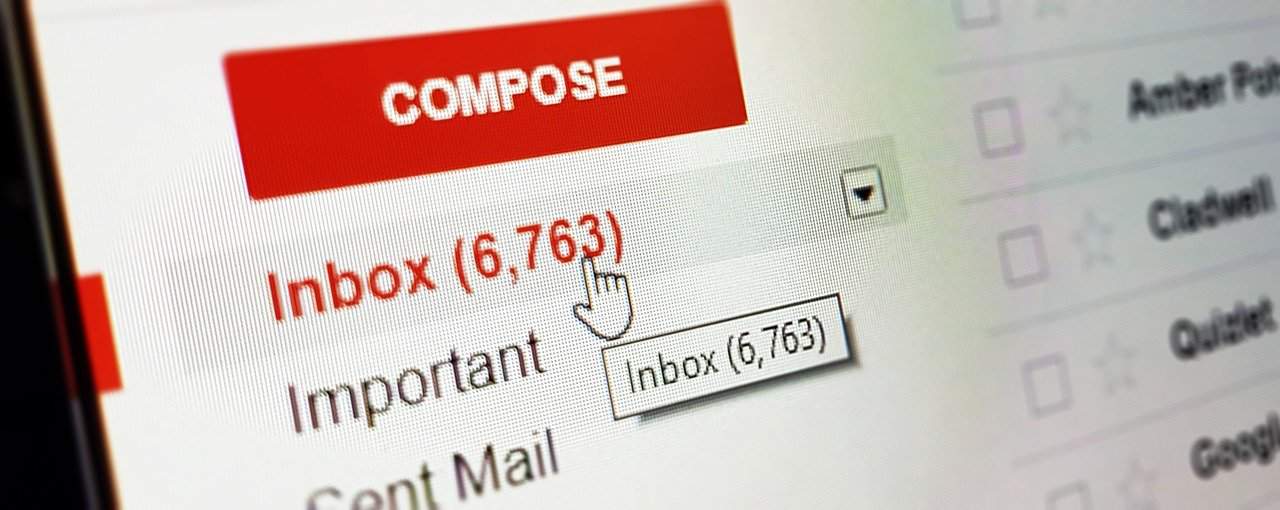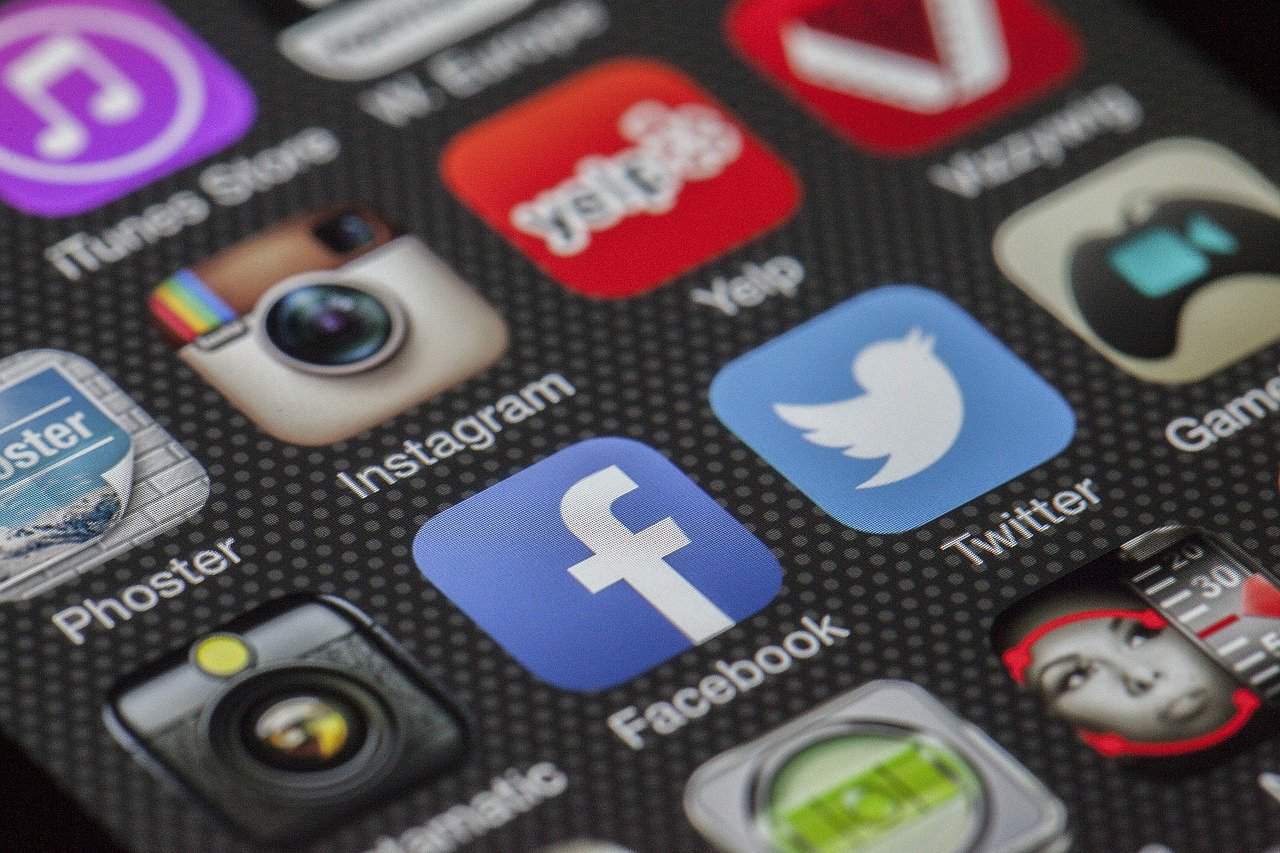
The Internet has grown to become a staple among many families and organizations. Despite the constantly growing numbers of the people who use it, there are only a few who learn facts about the internet. In this article, you will find internet facts that would change the way you see the great World Wide Web.
- Internet World Stats show that 4,536,248,808 people have internet access as of June 30, 2019.
- Around 1.94 billion websites from around the world have been recorded in December 2018.
- Almost half of the internet users on Earth are from Asia.
- Of all the traffic on the internet, 51.8% are from bots while 48.2% are from humans.
- As of December 27, 2019, the internet is 11,247 days old or around 31 years old.
- 93% of existent website traffic comes from search engines.
- Website load times that take longer than 2 seconds increased bounce rates by 50%.
- North America only makes up 8.2% of the entire population of internet users.
- In Q2 2018, .COM became the top-level domain that has the most registered sites.
- In Q3 2018, all the top-level domains gathered 342 million domain name registrations.
- Daily blog posts published on the internet reach up to 4 million.
- High ranking Google content has an average word count of 1,140-1,285 words.
- The processing of an answer for one Google query utilizes 1,000 computers within 0.2 seconds.
- Among the population of internet users, 80% have a mobile phone in possession.
- The average time that a person spends on social media networks every day is 2 hours and 15 minutes.
- Amongst all searches on record, around 50% of them have at least 4 words.
- An average of 63,000 searches passes through Google each second of every day.
- There are 2.1 billion accounts on Facebook, but 270 million of them are fake accounts.
- South Korea has the most population of mobile users at 71.5%.
- Each day, more than 90,000 websites fall victim to hacking.
The use of the word “surfing” alongside “internet” started in 1992.
Jean Armour Polly, an upstate New York librarian, coined the term. She was also known as the “Net Mom.”
Internet storage holds at least 1,200 petabytes worth of data.

As 1 terabyte is equal to 1,000 gigabytes, the estimate is equivalent to 1.2 million terabytes. This number is only an estimation between the big 4 – Google, Facebook, Microsoft, and Amazon.
This figure is also still exclusive of other bigtime providers such as Dropbox, SugarSync, and Barracuda.
August 6, 1991 is the publication date of the first website in the world.
Tim Berners-Lee, a British physicist, invented today’s World Wide Web. Queen Elizabeth knighted him on July 16, 2004.
Tim Berners-Lee is also known as the “Father of the Web.”
He was also the one to upload the first-ever image to the internet. It displays a joke referencing a band of women from CERN, a nuclear research laboratory.
The double slash “//” on the web URLs is the inventor’s greatest regret.
Berners-Lee admitted that the little addition was not necessary at all.
The first-ever email sent has the same sender and receiver.
In 1971, American computer programmer Ray Tomlinson sent out an email to himself. As much as his action made history, Tomlinson confessed that he does not remember what he said in the email.

Wednesday is the best day for sending emails.
On the contrary, Thursday is the worst day to do so.
The first-ever spam email was intended to sell computers.
Delivered in 1978, Gary Thuerk tried to make his sales by spamming over the ARPANET.
The internet being down for 24 hours costs more than you can imagine.
It is equivalent to the halt in the delivery of 196 billion emails and the suspension of 3 billion Google searches.
From 12 seconds in 2000, the average attention span went down to just 8 seconds in 2018.
In comparison, the average goldfish has an attention span of 9 seconds.
The second most reported economic crime in the world is cybercrime.
Of all recorded cyberattacks, 73% of them are due to economical reasons while above 40% is directed towards small businesses.

Each day, about 4,000 ransomware attacks are executed.
The average amount that perpetrators demand after an attack is $1,077.
The record of the largest data breach involved Yahoo.
Back in 2013, the birth dates, phone numbers and security questions of approximately 3 billion Yahoo users were hacked.
The most typical aim of cybercriminals are passwords that are either weak or stolen.
Of all recorded cyberattacks, 81% involved ineffective, thus, stolen passwords.
The most hacked Customer Management System (CMS) is WordPress.
Among the documents of hacked websites, 83% of them use the mentioned platform.
Hacking by creating big-company fake emails to reach internet users is called phishing.
If successful, they trick users into sharing personal information via emails, fill-out forms and personal information inputs like passwords, social security numbers, and credit card numbers.
The best way to avoid being a phishing victim is by determining whether an email received is legitimate or just a phishing attempt.
A coordinated attack launched in September 2019 resulted in YouTube hacked accounts.
Thousands of creator accounts fell into the hands of malicious actors. The majority of the targeted accounts were those of the car channel community.
As a result, channels are either inaccessible or deleted while the blame is on the multifactor authentication policies that YouTube hosts.
Private browsing is not as “private” as you think.
A popular example is Google’s Incognito mode. An investigation by USA Today revealed that such modes only wipe your own computer of visited sites and saved information.
However, your history remains visible on your Internet Service Provider (ISP).

You can browse the internet safely by checking out secure connections from certain websites.
Look at the left corner of your address bar and if there is a padlock (🔒), it means that the site-PC connection is safe. You could also click on the sign to check which data-caching code or ‘cookies’ the site is using.
The “cookies” that you see on the websites that you visit leave a “crumb trail” to your IP address.
It is a way for websites to monitor website activity on your computer for things like deciding which ads to show you or aiding in easier future log-ins.
While it exposes your browsing habits to the websites you visit, it only traces back to your IP address instead of your personal name.
No amount of deleted browser history and cleared-out cookies can completely erase your traces on the internet.
Websites see your IP address every time your computer accesses their sites. The good thing is that it does not reveal your name. Still, you can take cover behind Virtual Private Networks or VPNs.
Existent IP addresses have a ratio of 100 addresses to 1 atom on the planet.
It means that the Earth would go extinct first before ever running out of these virtual identities. You could easily check yours by Googling “what is my IP address.”
You can Google lyrics by replacing unidentified words with an asterisk.
This method is helpful in generating more accurate results when you can’t complete a phrase with which you want to search for titles or lyrics.
NASA has an internet speed of 91 gigabits per second.
It is 13,000 times faster than the internet speed of the average user in the United States.

The World Wide Web can survive a catastrophic event.
Seven people hailed from different parts of the world hold the power to restart the internet in case of a world-shattering emergency.
Split equally among them is the power to preserve the system such that all of them have the power but no one could abuse it.
St. Isidore of Seville is the patron saint of the internet.
In 1997, Pope John Paul II designated St. Isidore as the official guide not only for the internet but also for all computer repairmen.
The invention of the webcam was initially intended to constantly check on a coffee pot.
Back in 1991, Cambridge University of England students grew tired of finding an empty pot every time they get up to fill a coffee cup. They solved the issue by setting up a “webcam” and hooking it to all the desktop computers in the office.
To monitor the coffee pot, the webcam would take a picture per second, or what is now known as “a frame per second” or “FPS.” What’s more, is that it presaged the internet.
The first browser that Microsoft Windows released was Cello.
Release in 1993, Cellos was widely used at the Cornell Law School. On the other hand, Windows Access instead of Unix is the most common pick for lawyers.
The first MP3 player released was the WinPlay3.
The real-time software was released in 1995 and enabled users to encode and playback MP3s on their computers.

Microsoft bought Hotmail just a year after its launching.
Hotmail went live in 1996 and since its merge with Microsoft, it has become known as Outlook.
The first social network made available to the public is SixDegrees.com
Unfortunately, it did not last long from its creation in 1997 to its close in 1999. It was one of the first platforms to enable users to upload photos and share information.
The usual coverage is within smaller networks with an angle on similar interests.
Google went live in 1998.
Since then, the incorporation expanded its range of services which includes email, social networking, video sharing, mapping, and cloud storage.
Google also pioneers in the development of Android’s mobile operating system as well as with Google Chrome.
The first major online scandal was leaked in 1999.
It happened when the names of British intelligence agents inappropriately emerged on an American website. This incident preceded the infamous Wikileaks.
The Millenium Bug was an unforeseen problem in the computer system.
Also known as the Y2K bug, it was on its way to make the dates exceeding December 31, 1999. Usual computer system automation systems only deal with the last two numbers of a year. Hence, 1900 would end up identical to 2000.
The term “wifi” does not have a significant meaning.
Interbrand, a brand consulting firm, created the name following a commission from the Wi-Fi Alliance. Aside from not having any exact meaning, the term also has unknown origins.
While some sources claim that it came from Hawaii in the 1970s, there are others who declare its origin in Australia in the 1990s.
On its launching date, Facebook was “The Facebook for Harvard University Students.”
From its release in 2004, it has evolved from being an exclusive network to the most widely used social media network today.
Facebook started as a group of college students’ way to socialize with their classmates better.
Out of the world’s total population, 53% are active on the internet and another 35% are active Facebook users.

Twitter was only a “Plan B” to Noah Glass’ podcasting venture.
Ex-Google staffer Evan Williams launched Odeo with Noah Glass as the founder. However, iTunes ended up dominating the industry. Team Odeo startup chose to cut their losses, hence, plan B.
America programmer Jack Dorsey birthed the idea of the then “Twttr.”
This platform allowed users to share their “statuses” live. The founding credit was not given to any of the men – Noah Glass, Jack Dorsey, and Florian Weber.
Still, all of them made contributions to the project that grew to become today’s Twitter.
Alexa claims Google as the most popular website in the U.S.
Following the site on the list are YouTube, Amazon, Facebook, and Yahoo, respectively. Meanwhile, Facebook has the highest daily time among the 5 platforms on-site at 17 minutes and 60 seconds.
The most visited social media platform in the world is Facebook.
It boasts of more than 2.2 billion active users. Next in line is YouTube and WhatsApp.
Facebook received criticisms in 2018 due to its data collection activities from user profiles.
Not only does the network know your interests, but Facebook also buys data from other companies. They use invasive information to tailor ads to users and gain more profit from it.
While Facebook is not the only guilty one, it is among the highest-profile cases of spying companies.
Facebook procured Instagram for $1 billion on an estimate.
Back then, the photo-sharing company only had 13 employees.
Porn websites have more visitors than your favorite sites.
Even when combined, Twitter, Netflix, and Amazon still have fewer visitors than the vulgar sites.
The most popular Google search in the U.S. for 2019 is “Disney Plus.”
On a global scale, the top rank goes to the term “India vs South Africa.” It was in reference to a cricket match held in September. Moreover, it also verified the power of one of the largest Google markets that are still emerging.
Google penalizes promotional ads that go beyond their limits.
Promotional ads or links are only permitted to take up to 15% of a web page.
An average day for Google is composed of 7-10 billion search queries.
Among those search queries, 15% are first-time searches.
Google Chrome is the dominating web browser at 64.92%.
Second on the list is Safari at 15.97%, followed by Firefox at 4.33%, Samsung Internet at 3.29%, UC Browser at 2.94%, and then Opera at 2.34% and Internet Explorer at 1.98%.

Instead of closing a Google Chrome tab, you could just put it on Silent.
You can determine which particular tab was making the annoying noise by looking for the tab with a volume symbol. Right-click the identified tab and select “Mute site” from the drop-down menu.
Popular sites hosted by WordPress include the Facebook Blog, Forbes, and The New York Times.
The web hosting site has 59.7% worth of market share and boasts of around 22.6 million active users around the world.
Among the recorded retail sales in the United States, 5% are credited to Amazon.
On a worldwide scale, it accounts for over 49% of all online sales.
The most popular type of digital advertisement today is Search advertisements.
In 2018, marketers boosted expenditure by 12%, reaching up to $113 billion worth of expenses.
The record for the highest-selling domain name goes to Cars.com.
Its worth went up to $872 million.
Among the top 1 million sites on the internet, only 5.6% are created with website builders.
The most popular website builders where users create sites are Squarespace, Wix, and Weebly.
American programmer Jack Dorsey published the first-ever tweet on March 21, 2006.
Under the username “@jack,” he tweeted “just setting up my twttr.”
The first video uploaded on YouTube was published on April 23, 2005.
The title of the video was “Me at the zoo,” and features one of the founders of the site, Jawed Karim, at the San Diego Zoo.
The GIF format was born in 1987.
Steve Wike, a Compuserve engineer, invented the format, and no, it is not pronounced as “jif.”
The biggest domain name registrar on the internet is Godaddy.
As of December 2018, 49.98% of existing domain names are registered under Godaddy.
The most digitally photographed food on the internet is pizza.
It is the most common food displayed by users on their Instagram profiles. With sushi in the second place, the list continues with juicy steak, burgers, and bacon.
An internet-famous meme was also successful in financing a person’s medical treatment.

Since the widespread of the “success kid” meme, the child on the image earned enough money to pay for his father’s kidney transplant.
Before the internet, “LOL” was supposed to mean “lots of love.”
An article published in 1989 proposed the new LOL acronym as well as suggested the use of ‘H’ for “Huh?”
The term “emoji” literally has a Japanese translation of “image character.”
In the Japanese language, “e” translates to “image” while “moji” translates to “character.”
The country with the highest internet speed is Taiwan.
With an average internet speed of 85.02 Mbps, it managed to beat the previous record-holder which is Singapore.
The country with the slowest internet speed is Yemen.
It only has an average internet speed of 0.38 Mbps. Compare that to the record of the country with the fastest internet speed!
The Southeast Asian country with the slowest internet speed is the Philippines.
On average, the internet speed in the country can only manage up to 3.54 Mbps.
The country with the highest internet infiltration is Iceland.
A whopping 100% of its population is using the internet.
Among all Asian countries, China has the most number of active internet users.
The country is home to 818,934,000 users. Following its numbers is the United States with 320,059,368 users, Russia with 109,552,842, and then the Latin America/Caribbean with 18,526,199 users.

The population of internet users in China is more than twice the U.S. population.
It is also greater than the population of the countries U.S., Japan, Mexico and Russia combined.
In 2005, Estonia was the first country to hold constitutionally compulsory general elections over the internet.
Each resident owns an ID card with a chip carrying a public-private key pair. They could use it to sign documents as well as cast their electoral votes through the internet. By 2011, 24% of all the votes in their election were cast online.
North Korea leaked its DNS data to the public by accident in 2016.
As it turns out, they only have 28 domains that use “.kp,” while the United Kingdom has 10 million “.uk” domains to compare.
The country with the highest record of e-commerce sales is the United Kingdom.
China follows in second, with Norway, Finland, and South Korea close at its trails. The growth of global online retail sales has an estimated reach of 8.8% of all retail spending in 2018.
In North America, 80% of adult internet users apply at least 1 ad-blocking method.
Meanwhile, 50% of the same population applies at least 2 methods. On the other hand, Asia is responsible for 90% of mobile devices that operate ad-blockers.
An Alexandria library holds a copy of every single web page ever made.
Not just every website, but every single page on every single site made on the internet since the record’s birth in 1996.
In Q3 2019, web traffic on mobile devices amounted to 51.51% of the total global website traffic.
Since early in 2017, mobile web traffic hovered consistently around 50%.
In 2017, web traffic on mobile devices is only at 50.3%.
It rose up to 52.2% in 2018.
Web traffic is higher in mobile, but engagement is higher on the desktop.
Desktop users take up 55.9% of the total time spent on sites. On the other hand, mobile users only make up 40.1% visit on such sites.
The first traded item over the internet was a bag of marijuana.

It was around 1971 when Stanford students made the transaction with MIT students through the internet.
The influence of the internet in retail sales costs around $2.84 trillion back in 2018.
The expected influence on retail sales was expected to rise up to $3.45 trillion in 2019.
Among the population of online shoppers, only 35% are willing to pay for delivery fees.
In contrast, the other 65% are not too willing to pay any shipping fees on their online orders.
The main determining factor as to where 87% of Americans shop is the price.
Delivery speed and shipping cost is the deciding factor for 80% of the population, while 71% make decisions based on the discount offer opportunities available in the shop.
Was this page helpful?
Our commitment to delivering trustworthy and engaging content is at the heart of what we do. Each fact on our site is contributed by real users like you, bringing a wealth of diverse insights and information. To ensure the highest standards of accuracy and reliability, our dedicated editors meticulously review each submission. This process guarantees that the facts we share are not only fascinating but also credible. Trust in our commitment to quality and authenticity as you explore and learn with us.


